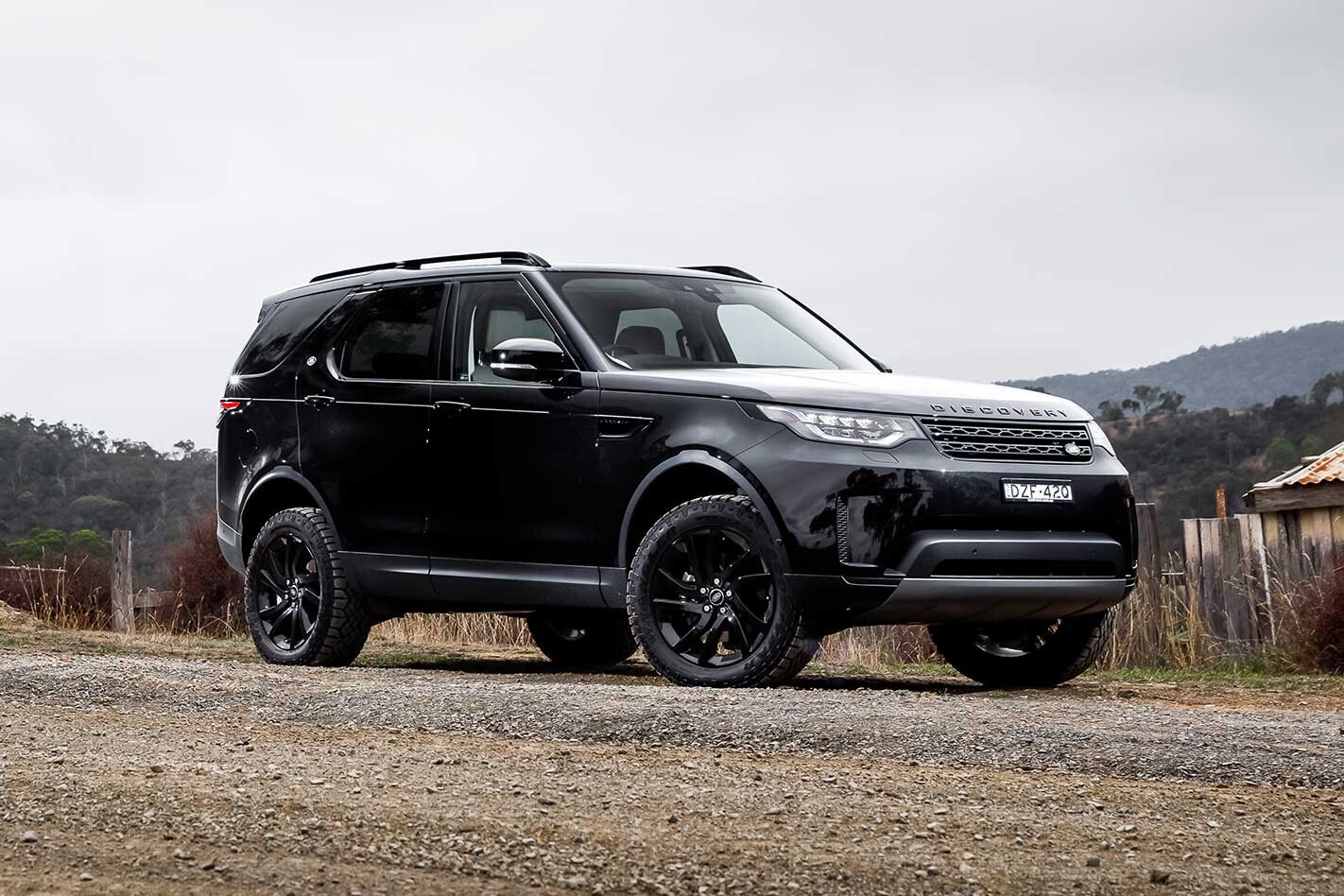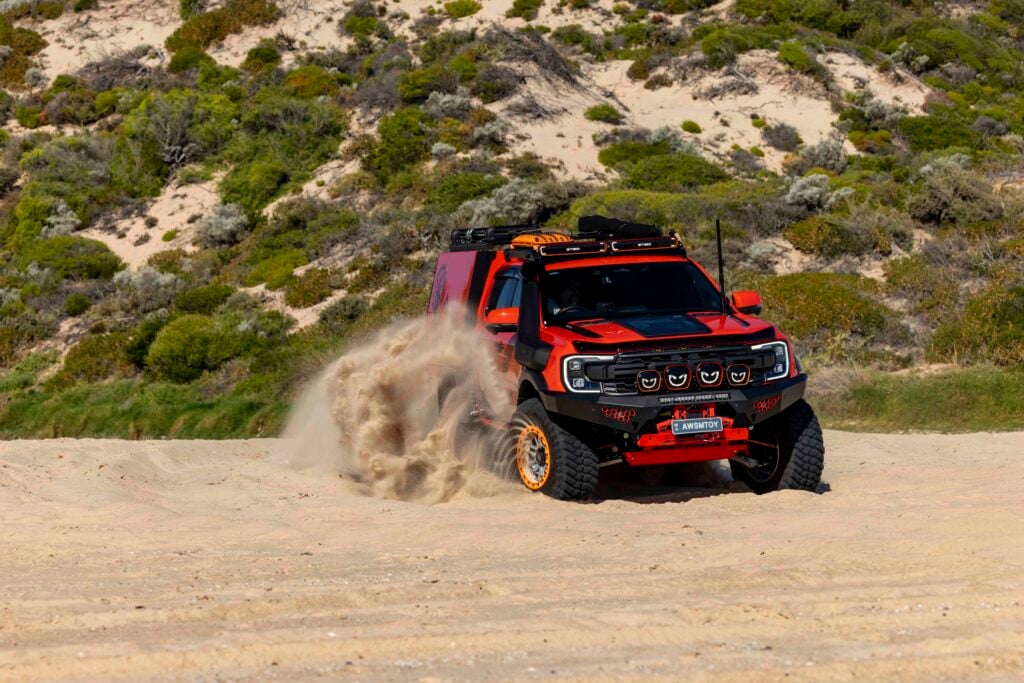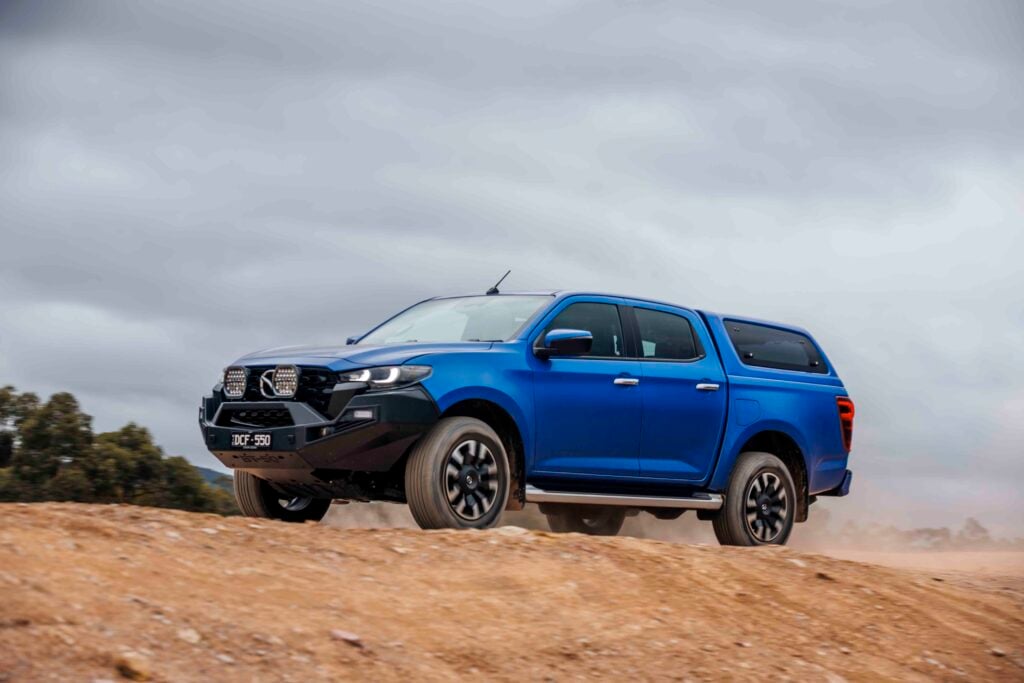- Introduction: Disco choice
- Update 1: Highway star
- Update 2: Load lugger
- Update 3: Daily duties
- Update 4: Copping new boots
- Update 5: Conclusion
Introduction: Disco choice
Land Rover let Matt configure his own Disco, and he didn’t hold back. By: Matt Raudonikis
BACK IN the middle of last year we asked Land Rover if we could get a Discovery Sd4 as a long-term test vehicle. This was the vehicle we had recently awarded as our 4×4 of the Year and we were keen to see what living with it and exploring in it over an extended period would be like.
Land Rover told us it was ordering its stock of 2019-spec cars and the then-current fleet was being pulled out of service, so they offered us the chance to specify and order a vehicle as we would like it via the online vehicle configurator at www.landrover.com.au

Now it’s unlikely I’ll ever be able to afford to order and buy a new vehicle of any kind, let alone something the calibre of the Discovery, so I was pretty chuffed at being let loose on the configurator with the promise of an actual vehicle at the end of it.
I’ve played with vehicle configurators from many manufacturers plenty of times, but it was only ever dreaming of how I’d spec a car. This was the real thing.
It’s well-known that European car manufacturers offer a truckload of options and extras on their vehicles which can really jack up the price, so I set aside some time to dive into the Land Rover configurator, but it wasn’t that complicated. As a 4X4 Australia vehicle there were a couple of essentials we needed, while the rest were comfort, convenience and style options.
The first essential item – and to match our 4X4OTY-winning vehicle spec – was the Capability Plus Pack. All Discovery vehicles have a dual-range transfer case, Terrain Response and height-adjustable suspension, however, this $3270 pack includes All Terrain Progress Control (ATPC), Terrain Response 2 and the Active Rear Locking differential. The most valuable part of the entire kit is that auto-locking rear diff.

The other must-have for us was to upsize the Discovery SE’s standard-fit 19-inch alloys to 20s. No we haven’t gone crazy and resorted to big bling wheels, it’s just that 19s are a relatively uncommon size and there are a lot more options for off-road-suitable tyres on 20-inch rims. The 20-inch, five-split-spoke gloss black wheels added a further $2990 to the $87,450 sticker price.
While we were going black on the wheels we also added the $1400 Black Exterior pack, which darkens the grille, side vents, door mirrors, bonnet badging and tow eye covers. Lather all that over the Santorini Black paintwork and black-as privacy glass and the Disco is looking pretty stealth.
Inside I went for contrasting Acorn leather trim on the seats ($850 for heated front seats), natural Shadow Oak veneer trims ($640), and a dual panoramic roof with opening front sunroof and fixed rear (another $4370 to the price). All up we’d be looking at $103,840 plus on-road costs to drive away in this black beauty.
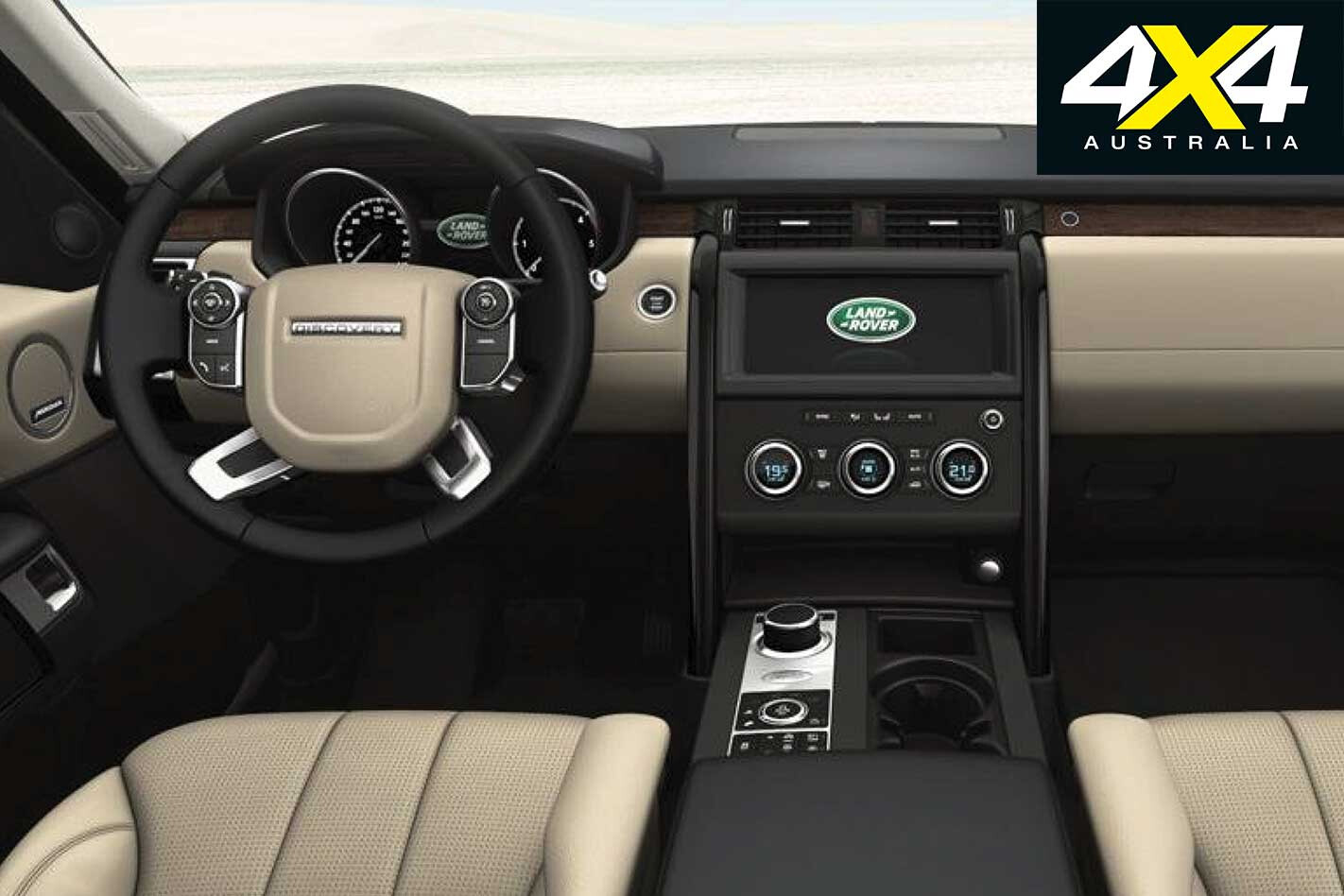
While $100K sounds like a lot of money for a family fourby, the Discovery delivers a lot of car. After all, it wasn’t our 4X4OTY for nothing. Think of it as a more affordable Range Rover and you start to see the value, as it’s a true luxury vehicle with all the luxury and convenience features you would expect. Well, almost all of them.
There are couple of features that come standard on much lower-priced vehicles that are not present on the Disco SE. They aren’t essential, but we miss them at this price point. The SE gets keyless push-button start/stop so you could theoretically leave the key fob in your pocket, but it doesn’t have keyless entry so you still need to unlock the doors using the fob. Keyless entry is another option on the SE, or standard if you step up to the HSE.
Initial use of the Disco’s factory navigation system has taken a bit of getting used to and it’s not as intuitive and simple as most other factory set-ups. Nor does the system have Apple CarPlay or Android Auto, which would solve this problem with direct connectivity to your chosen smartphone. Land Rover does have an InControl app that links to your phone, but we tried it and it offers nothing we would use. They might be petty little gripes and they certainly shouldn’t detract from the vehicle ownership experience.
The black Disco is living with us for the next six months, and next month we’ll start putting some kilometres under its tyres.
4×4 Shed Log 1: 2019 Land Rover Discovery SD4 Current mileage: 148km Date acquired: Dec 2018 Price: $103,840 +ORC Average fuel consumption: N/A
Update 1: Highway star
We hit the highway to run in our new Discovery. By: Matt Raudonikis
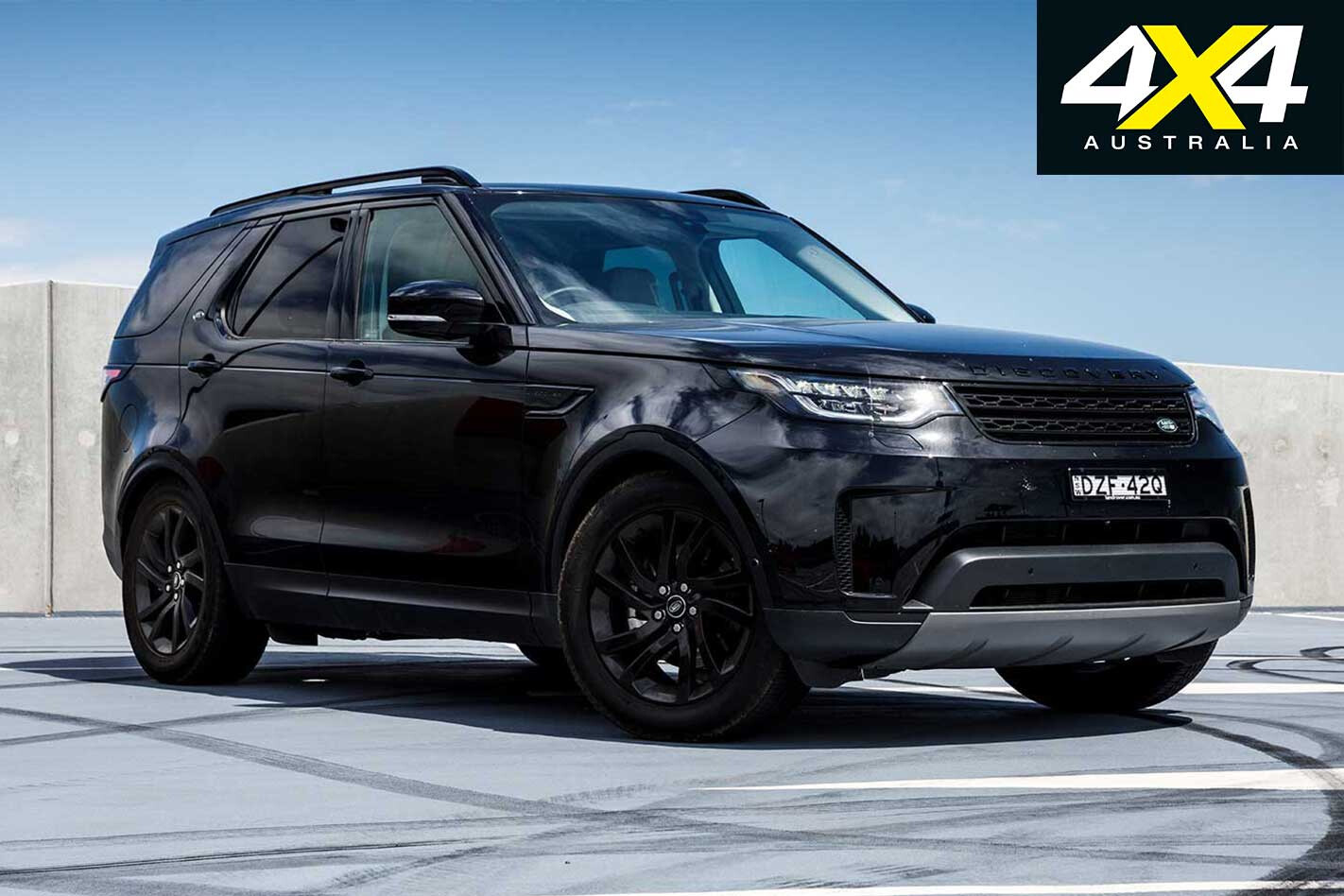
We took possession of the Discovery in late December and it landed pretty much exactly as we spec’d it on Land Rover’s configurator. The only real difference being that the steering wheel is on the right-hand side – thankfully – and it has roof rails. With the holiday break beckoning we set about putting some kilometres on the car, which had less than 150km on the clock.
Two weeks and a little more than 4000km later, the Discovery has proven itself as an incredible long-distance tourer. What was just as incredible was the sub-7.0L/100km of diesel fuel it sipped on the highway.
The trip took us from Melbourne to Brisbane via the Newell Highway, where we toured at the speed limit; being extra cautious to watch the speedo, with extra police patrols in force for the holidays.
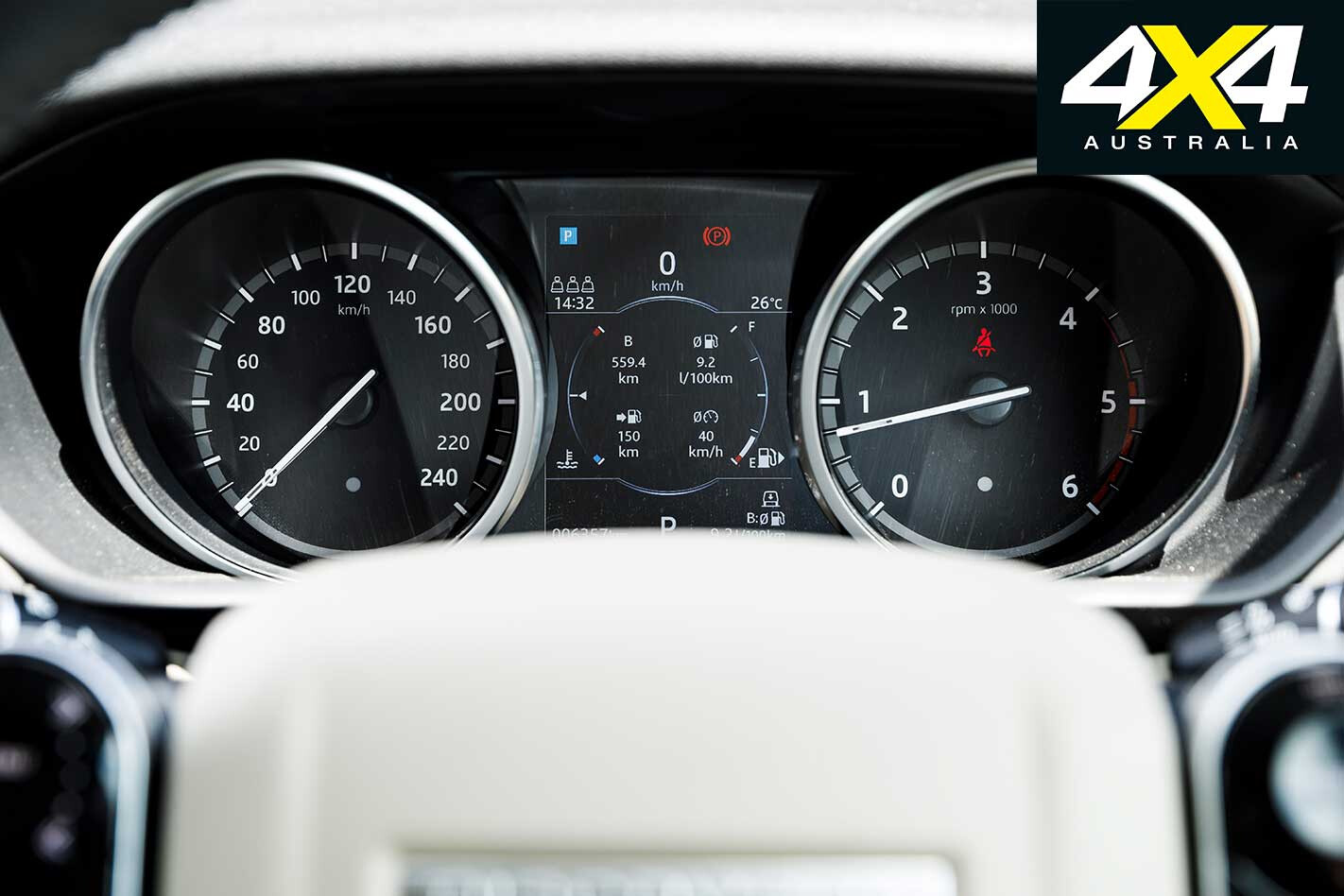
The SE spec has standard cruise control and not automatic radar cruise, which suits us fine as auto cruise can be a nuisance. Auto cruise is an option on SE spec, but we’d been careful not to tick too many options on this car to keep the price reasonable.
Cool bum, please
In the heat of summer it soon became apparent I should have ticked the box for optional cooled seats. The leather seats in the SE are heated but cooling is optional, and cool pews would have been appreciated during the long, hot stints on this drive.
Fortunately, the air-conditioning does a pretty good job of keeping the cabin cool; although, it does struggle a bit with Australian summer conditions. My usual preferred setting for climate control in any car is 23°C, but in the Disco I find myself using ‘A/C Max’ to cool the cabin and then setting it to 20°C to maintain comfort.
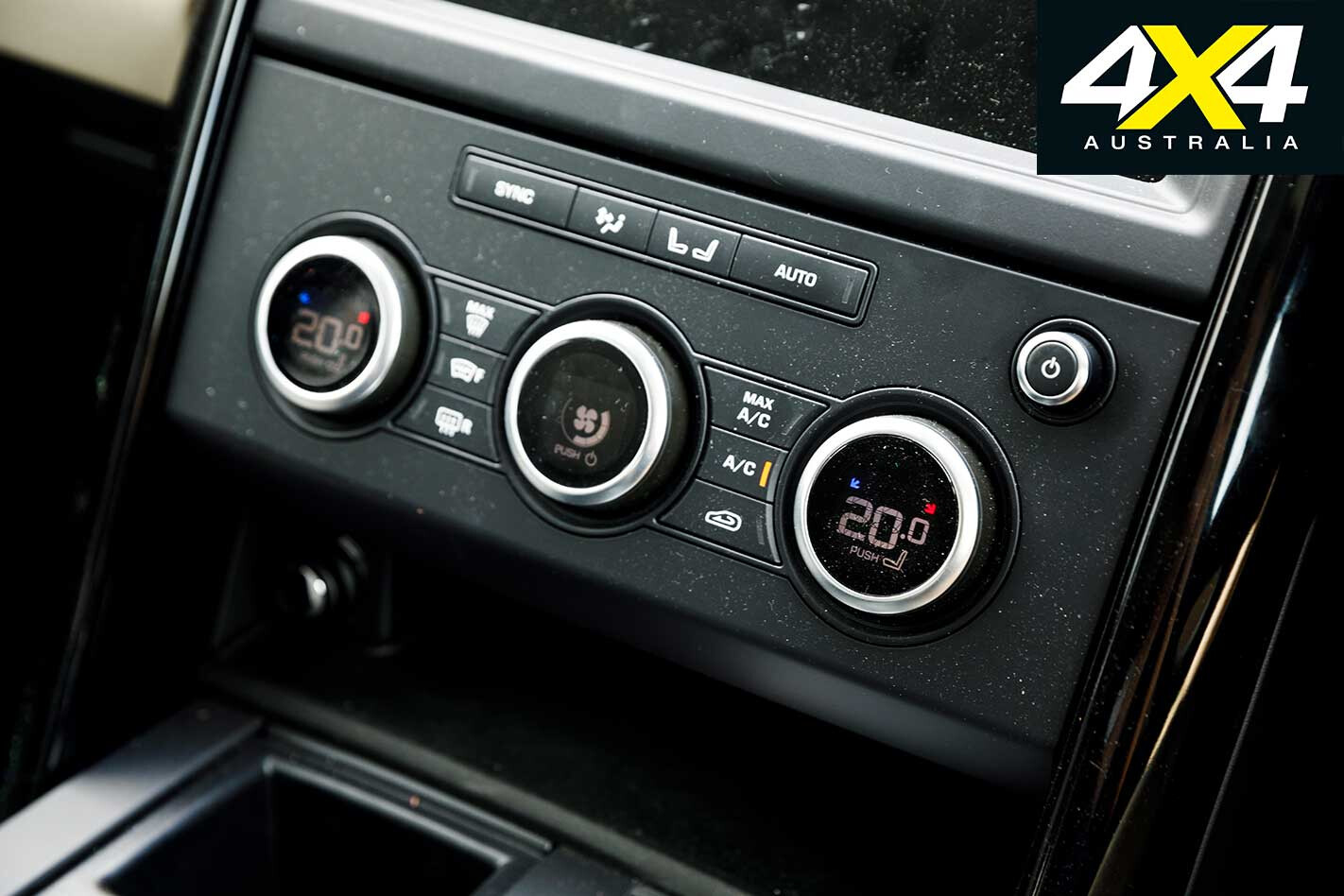
The seats and cabin are very comfortable, making long drives pleasurable. This latest Discovery has a very different feel to its cabin than that of Discos past, but it still has a large glasshouse that offers plenty of vision around the car and makes it ideal for touring scenic country roads or manoeuvring tight off-road tracks.
While the SD4’s 2.0-litre four-cylinder diesel engine might seem small for a large SUV like the Discovery – in fact, torque output has been cut from 500Nm in MY18 to 430Nm for the MY19 specification, to meet emission regulations – it never feels wanting for more performance on the highway.
Overtaking road trains at upwards of 100km/h was never an issue, the transmission kicking back quickly and the car powering onwards. Peak power remains at 177kW.
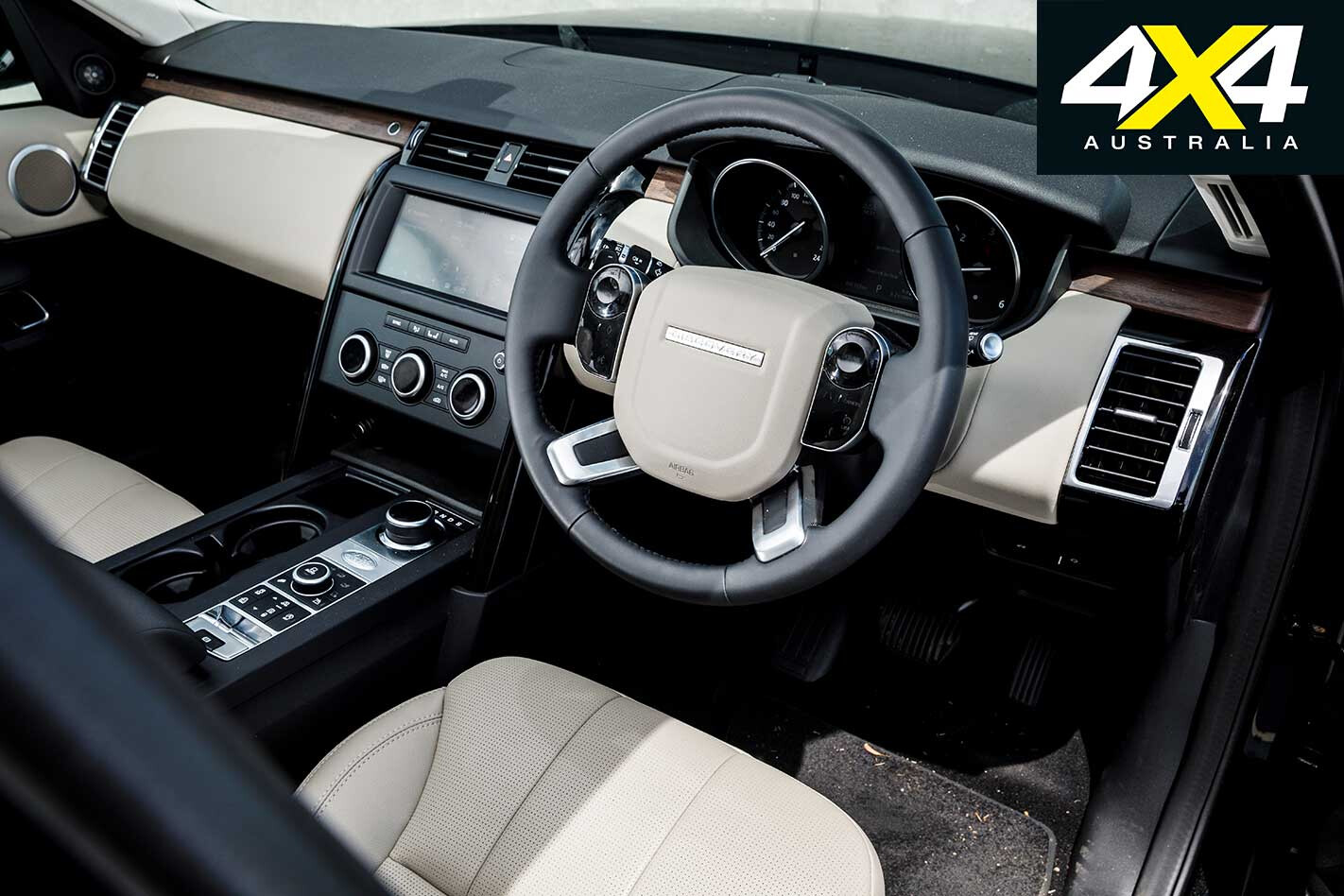
There is one area of performance where it does feel wanting, and that’s low-speed around-town throttle response. You squeeze the pedal lightly to drive through a roundabout or pull out of a street and there’s nothing there, so you squeeze it a bit more and the car shoots off like it’s propelled from a catapult.
It’s almost like turbo lag, but you would expect the bi-turbo arrangement of the Ingenium engine would account for that … it’s more likely the calibration of the throttle than the engine itself. This seems to be a trait of a few new vehicles, and it’s one aftermarket throttle tuners will take advantage of.
For now the Disco will be tasked with some city commuting, before we get to take it off-road again.
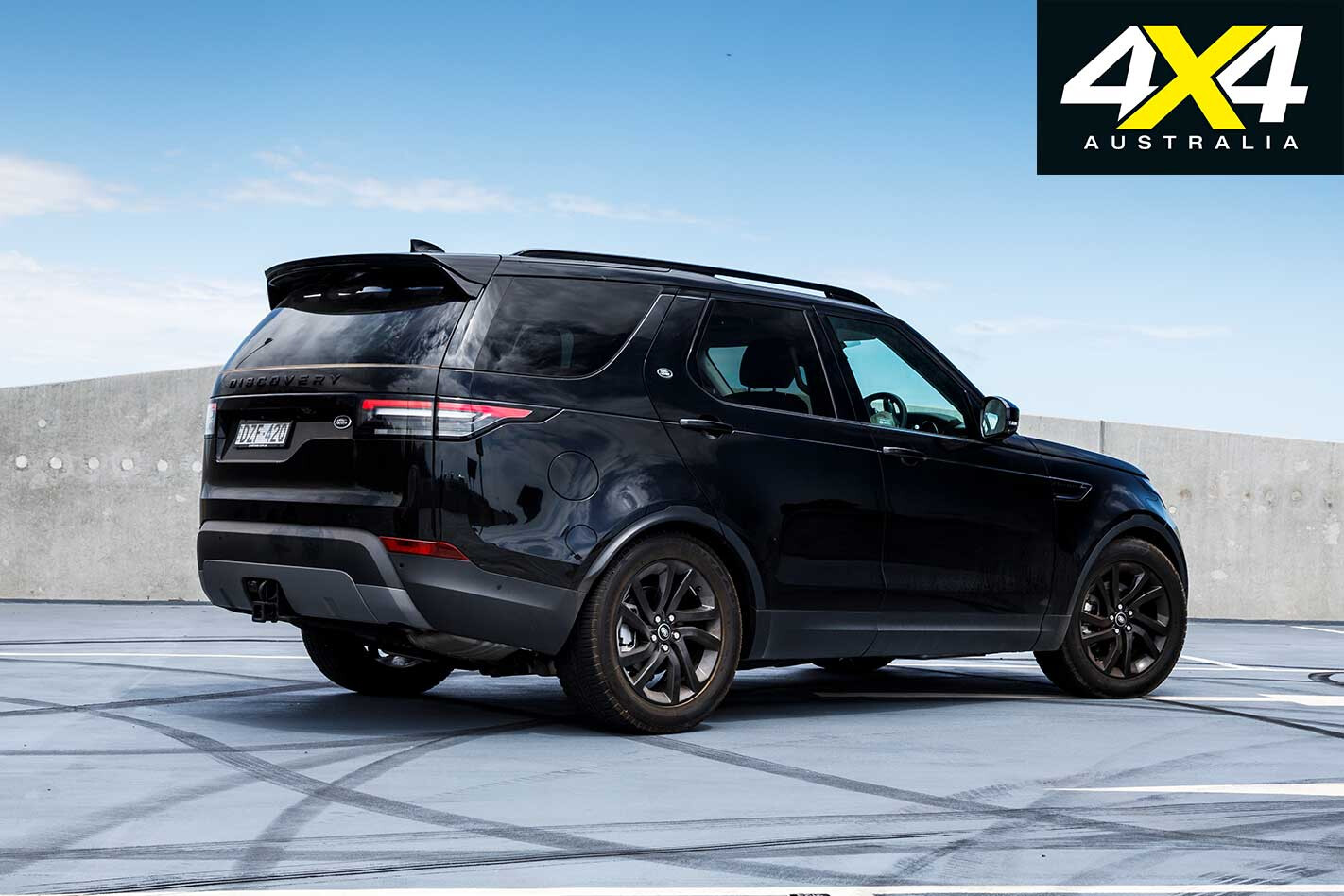
4×4 Shed Log 2: 2019 Land Rover Discovery SD4 Current mileage: 4411km Mileage since last update: 4263km Average fuel consumption: N/A
Update 2: Load lugger
A busy month has the Disco earning its keep. By: Tristan Tancredi

RETURNING from a 4000km return trip from Melbourne to Brisbane the previous month, the 2019 Land Rover Discovery’s duties were honed towards city and suburban life. By no means does that mean we took it easy on the big Brit; quite the opposite, actually.
Instead, we borrowed a tow ball and hitch from a mate and the black Disco played tow rig to a single-tandem trailer, ferrying tonnes of junk to the local tip. With a 3500kg towing capacity, the Disco’s 177kW and 430Nm made mince-meat of the load.
In the March issue of 4X4 Australia, Matt mentioned the Disco’s non-existent low-speed throttle response: “Squeeze the pedal lightly and there’s nothing there,” he said. Slowly backing the trailer up to the ‘dump-site’ exaggerated this issue, as touching the pedal to slowly usher the rig back a few metres proved to be difficult. The aftermarket should sort out this calibration issue, though.
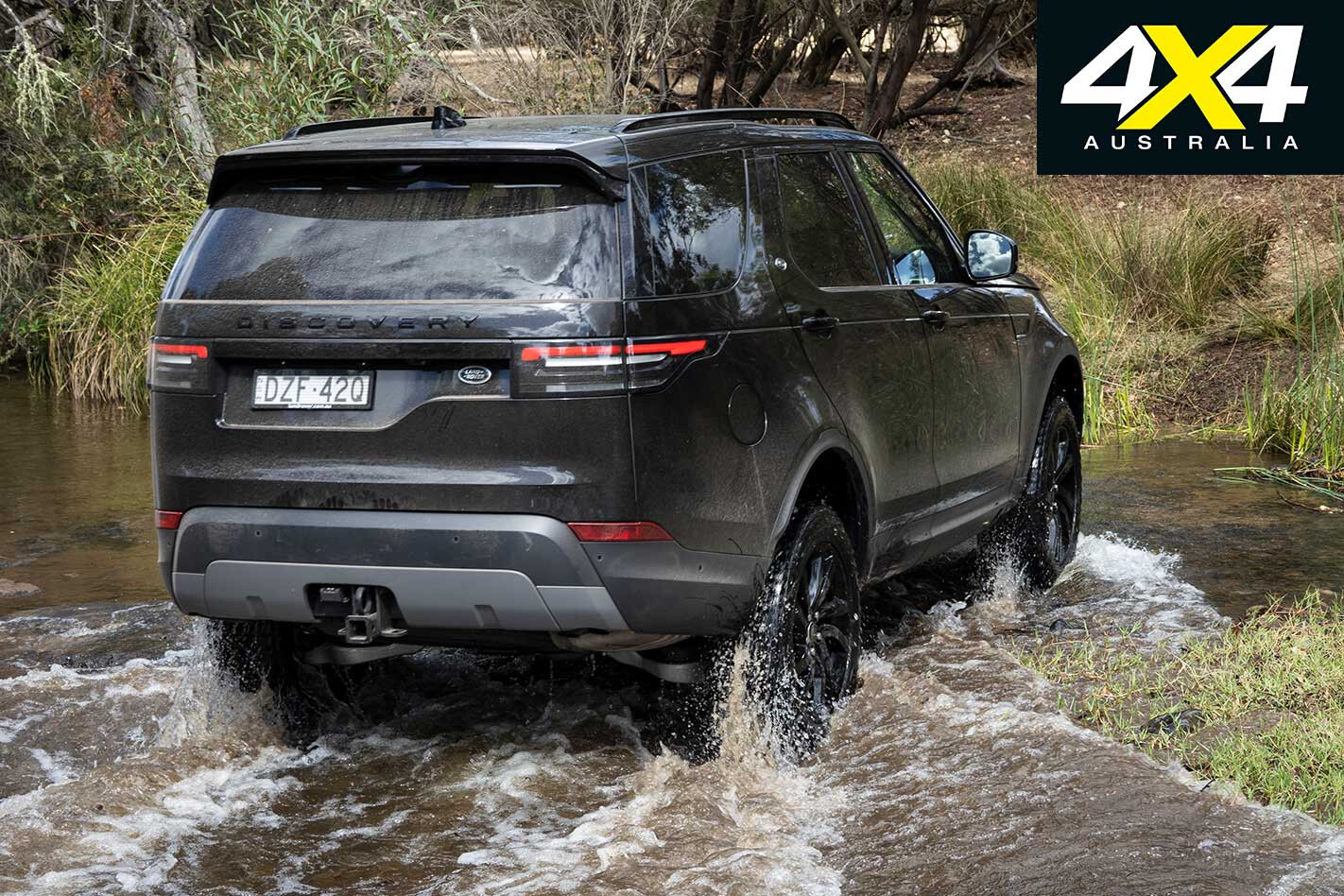
Boot space is ample, too, with more than 2400 litres behind the front seats and 1137 litres behind the second seats. We managed to store a pair of 2.7m lengths of timber within the vehicle, sliding them between the front seats.
The month also involved a weekend burst to Yea, north of Melbourne. Racing sunset to reach our destination, as this section of road is notorious for wandering wildlife, provided the opportunity to let the Disco stretch its legs and display its on-road prowess on twisty bitumen.
For a 2.0-litre four-cylinder diesel-powered car, you’re constantly aware you’re in a ‘floaty’ wagon weighing in at more than 2100kg, but the engine’s sufficient output gives the Disco enough urgency to make the drive fun enough.
The roads out here are dry and dusty, though, not the ideal environment for a black vehicle (with the added Black Exterior pack and privacy glass) and 20-inch, gloss black wheels.
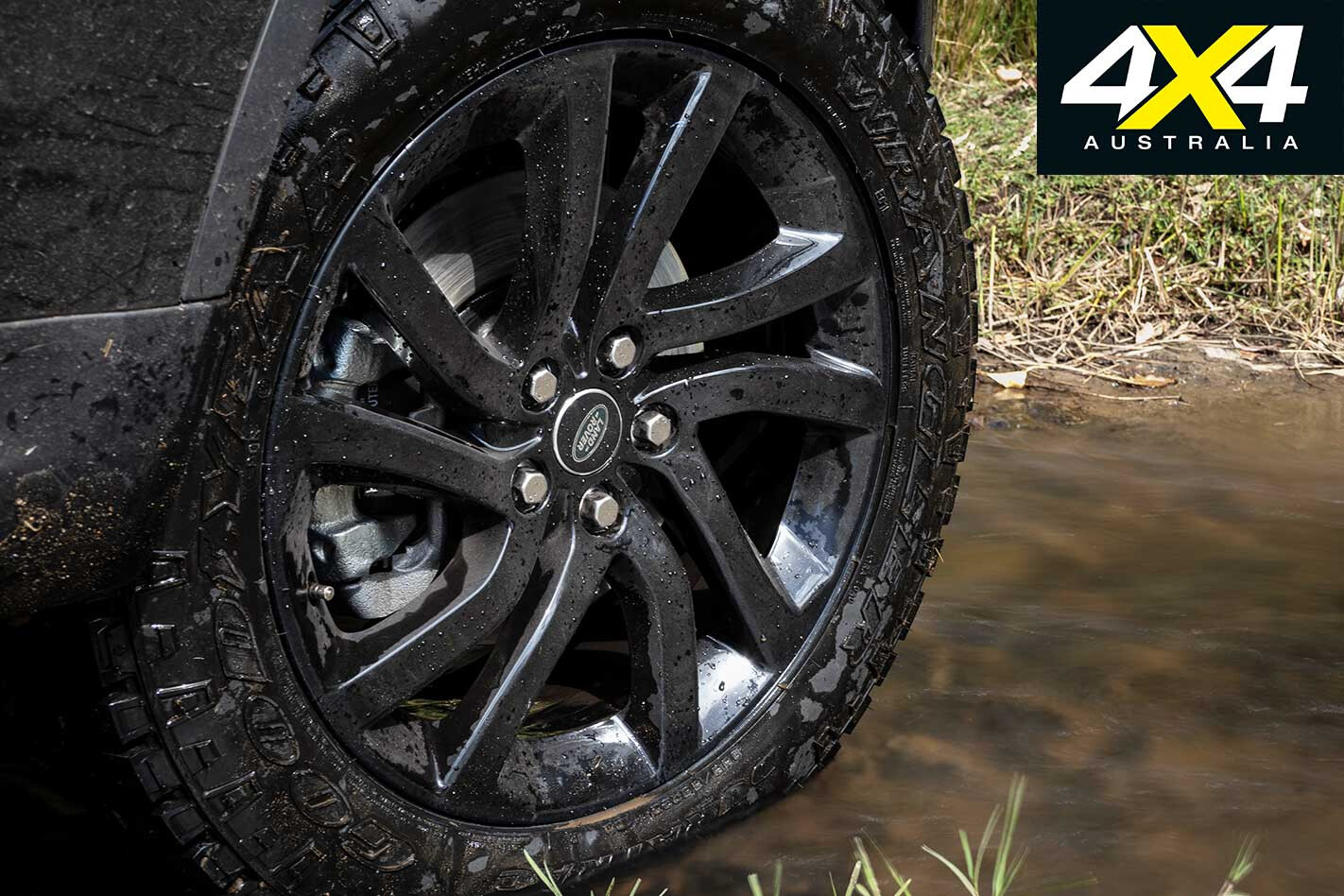
The cockpit is lush and spacious, with the beige contrasting well with the black upholstery. Nitpicking, perhaps, but waiting a few seconds for the transmission dial to rise once the ignition is kicked over – it sinks back in the centre console when the car is off – can be slightly cumbersome.
Also tiresome is the overbearing 360° Parking Aid technology, which constantly reminds the driver it’s there despite there being no notable obstacles (a dip in our driveway, for example, set it off without fail every morning).
The sat-nav interface on the 10-inch touchscreen is clean and easy to operate, but the InControl GPS powered by TomTom hasn’t quite figured out how to best analyse traffic and provide the quickest route.
More than once we used our Android’s Google Maps instead, shaving more than 20 minutes off the ETA in some instances. The vehicle doesn’t have Apple CarPlay or Android Auto, so we had to sit the phone in a cradle – the old-school way.

With 6500km on the odometer the dash was warning us that the exhaust fluid needed topping up and we only had 2000km of range. This is the Adblue for the SCR emissions reductions system and, if you let it run dry, the car won’t start.
Most cars simply have a filler for the Adblue tank beside the fuel filler and they are easy to fill. Not Land Rover, though. It puts the filler under the bonnet and has a small filler that requires a special LR bottle to fill it properly.
Past experience topping up a Range Rover from a store-bought bottle in the bush proved to be a messy job, so this time we took it straight back to the dealer to have them fill the tank. This is worth knowing if you’re planning a long trip in your late model Land Rover and you might need to carry a supply of the AdBlue fluid.
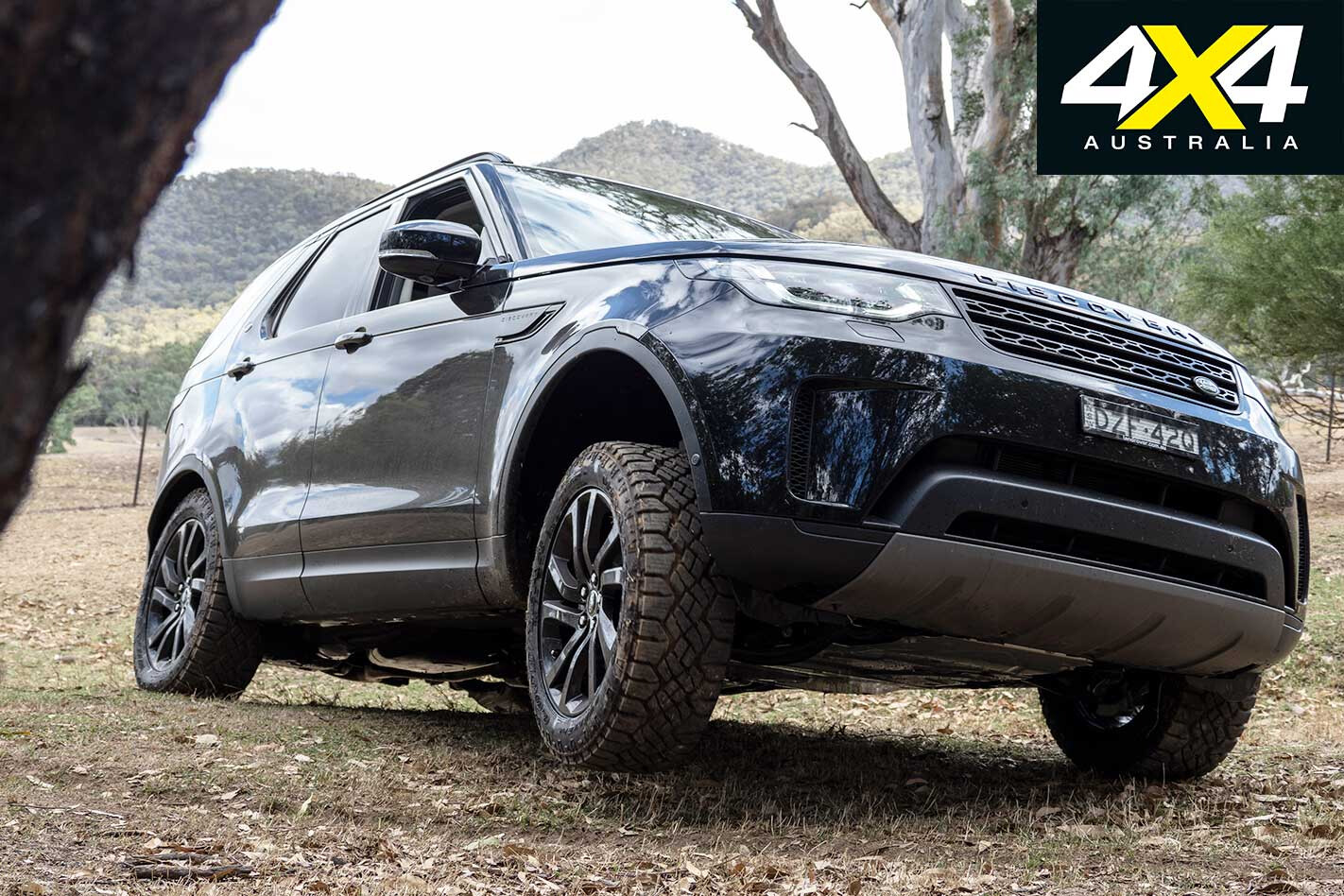
4×4 Shed Log 3: 2019 Land Rover Discovery SD4 Current mileage: 7059km Mileage since last update: 2468km Average fuel consumption: 8.84L/100km
Update 3: Daily duties
It’s been bush and ’burbs for our Discovery Sd4 this past month. By: Matt Raudonikis
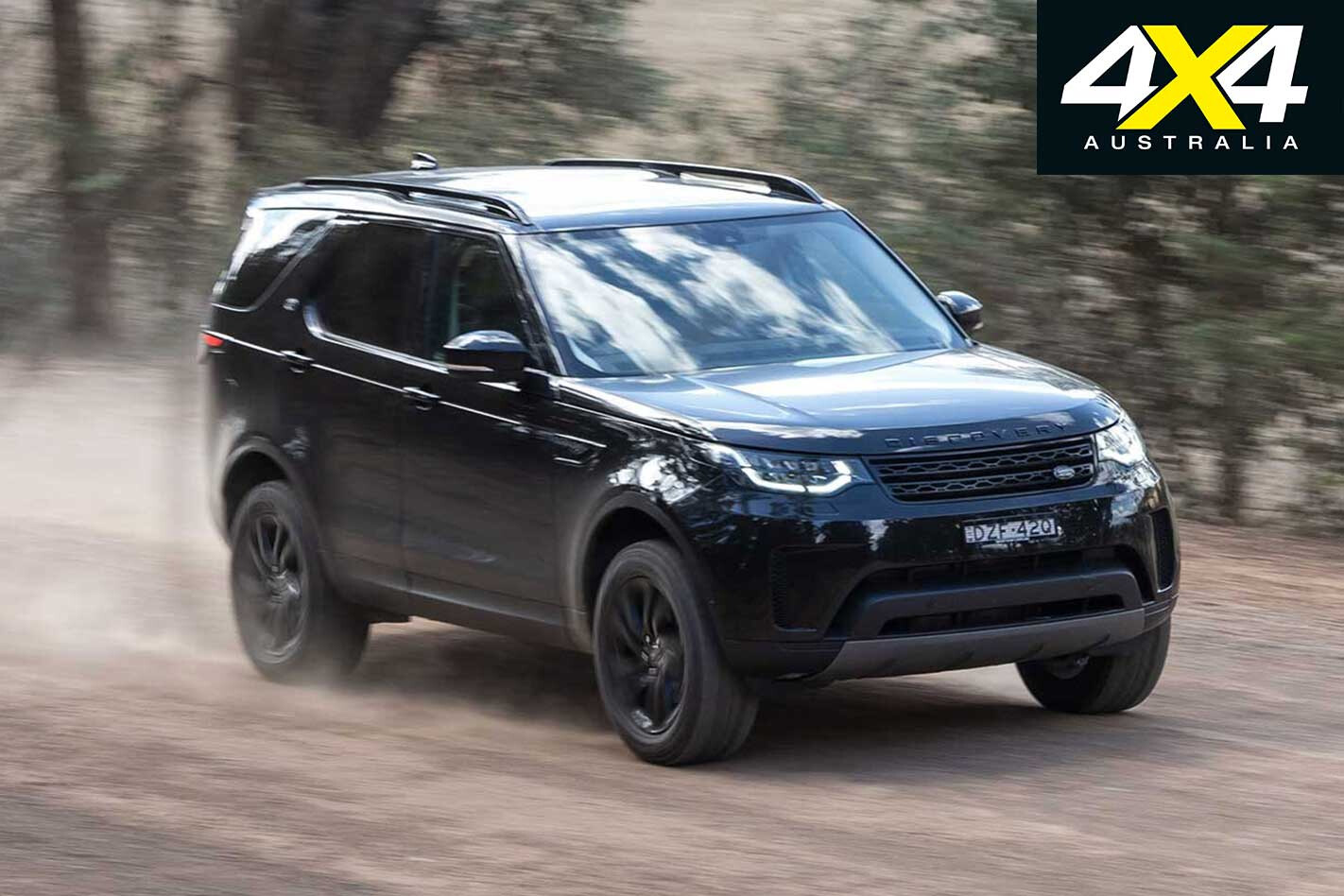
It’s been a solid mix of city commuting and weekend getaways for the Disco this past month, as we balance the work/life conundrum. Thankfully the 2019 Land Rover Discovery does both very well, delivering a comfortable and easy to live with vehicle for the weekday grind, yet one that is both capable and competent for bush escapes.
We’ve improved the bush ability of the Disco somewhat by replacing the OE highway tyres with a set of Goodyear Duratracs in the OE 255/55-20 size. This is the officially approved off-road option tyre from Land Rover, so we had to stick to the factory size.
The Duratracs are also available in a 275/55-20, which we would have preferred to fit and it still would have been a legal upgrade, but we didn’t have that option on the Land Rover test car.
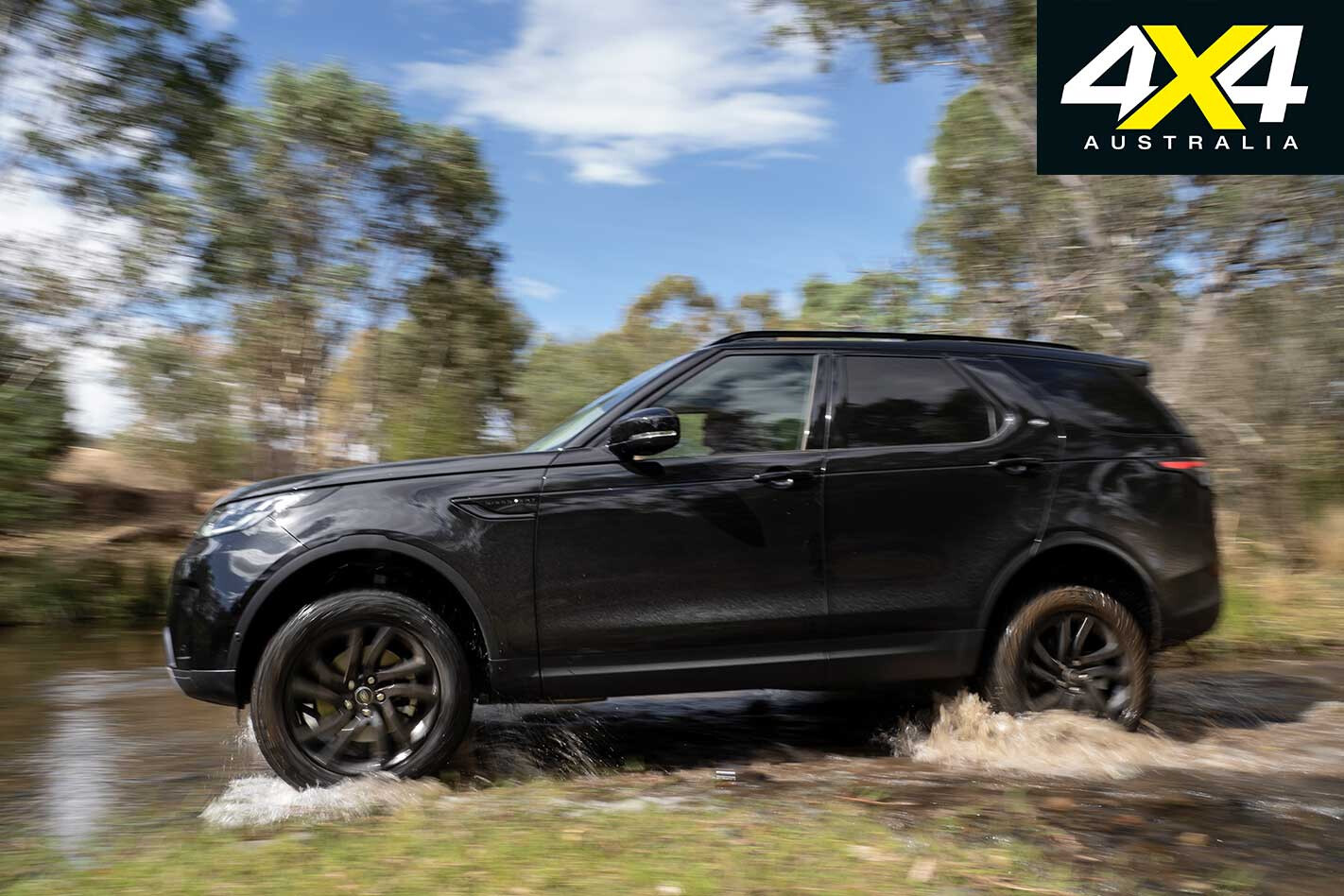
Lucky we fitted the tyres when we did, as when the guys at Beaurepaires Chadstone removed the originals tyres they found a chunk of tread missing from the inside edge of one of the front tyres. Being on the inside of the tyre it wasn’t easily detected, and it was bad enough that it could have led to tyre failure. It just shows the need for tougher rubber for vehicles that go off-road.
We’ll have more details on how well the Duratracs have performed in a full report soon, but since fitting them, people have commented on how good the Discovery looks, whereas before they would simply say “it looks good but you wouldn’t take it off-road”. The Duratracs gave us more confidence in the car on weekend escapes up to a bush property and to the Vic High Country.
Adding to the appearance of the Discovery has been the fact that I’m driving it in the raised suspension height most of the time. The automatic height-adjustable suspension doesn’t drop down to the lower setting until you hit 80km/h, when it lowers to its highway cruising height for improved dynamics and fuel efficiency.
We haven’t found the higher setting to have any detriment to everyday suburban ride quality and handling, while the taller height makes getting in and out easier. This suits me, as opposed to the Land Rover ‘access’ height that lowers the car when you put the transmission in ‘Park’. Plus, it looks more purposeful, as affirmed by the comments we’ve had on it.
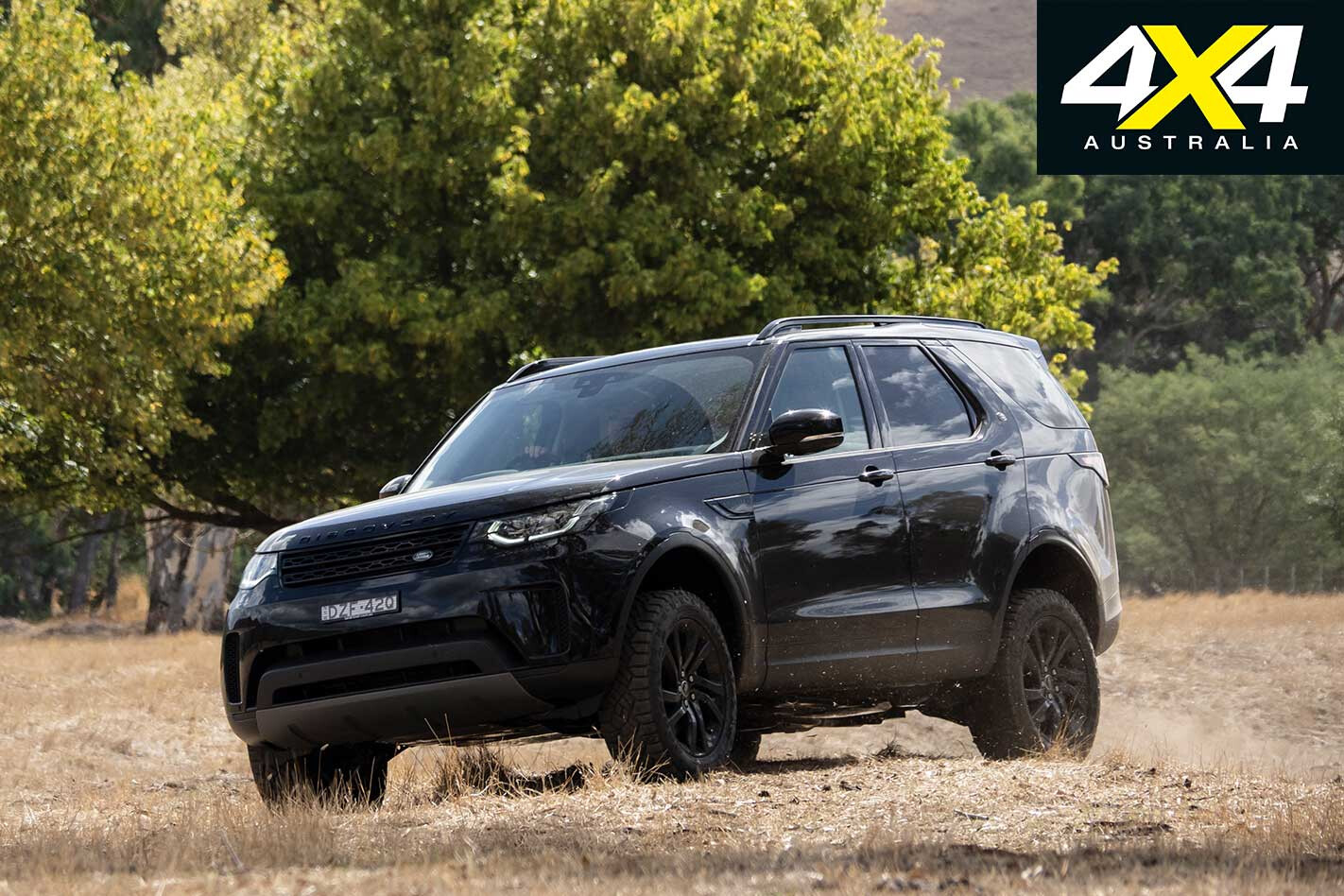
An added bonus of driving in the higher setting is that this disables the idle stop-start function, which I find annoying on any car… it saves me having to switch that function off every time I start the car.
We did have a minor hiccup with the Disco that required a short trip to the dealership: I was getting out of the car in our office carpark and was gathering my phone, keys and satchel for the day ahead. I dropped the Land Rover key fob in the driver’s footwell and it bounced off my heel and under the seat.
More worryingly, though, it landed with a metallic clunk and not the muffled sound you would expect had it hit the Disco’s plush carpet.
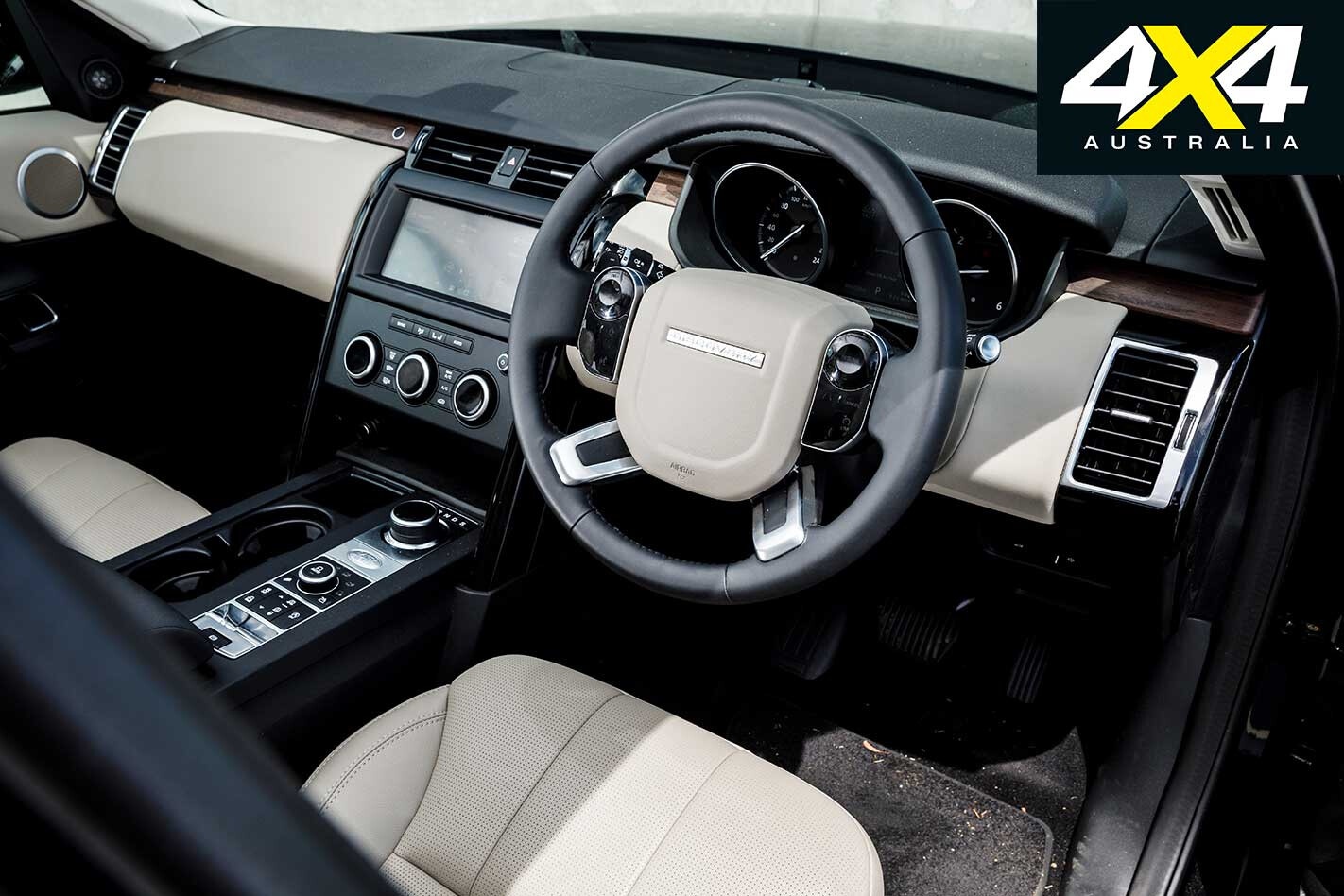
Looking under the seat the fob had found its way into a floor cavity and inside the chassis, where it couldn’t be reached by hand. I tried a magnet on a flexible wand hoping it might catch on the metal key ring, but to no avail. The Discovery SE has a start button for the ignition but requires you press the key fob to lock and unlock the doors, so I could start the car but couldn’t secure it.
On the drive to the dealer the fob must have moved further into the chassis as a dash warning came up to say that the key was not detected in the vehicle. So now, if I switched the engine off, I would not have been able to restart it as the car wasn’t detecting the proximity key.
At the dealer, the technician had to remove the seat completely and spent a while messing around to retrieve the fob before we could return to normal service. What an ordeal.
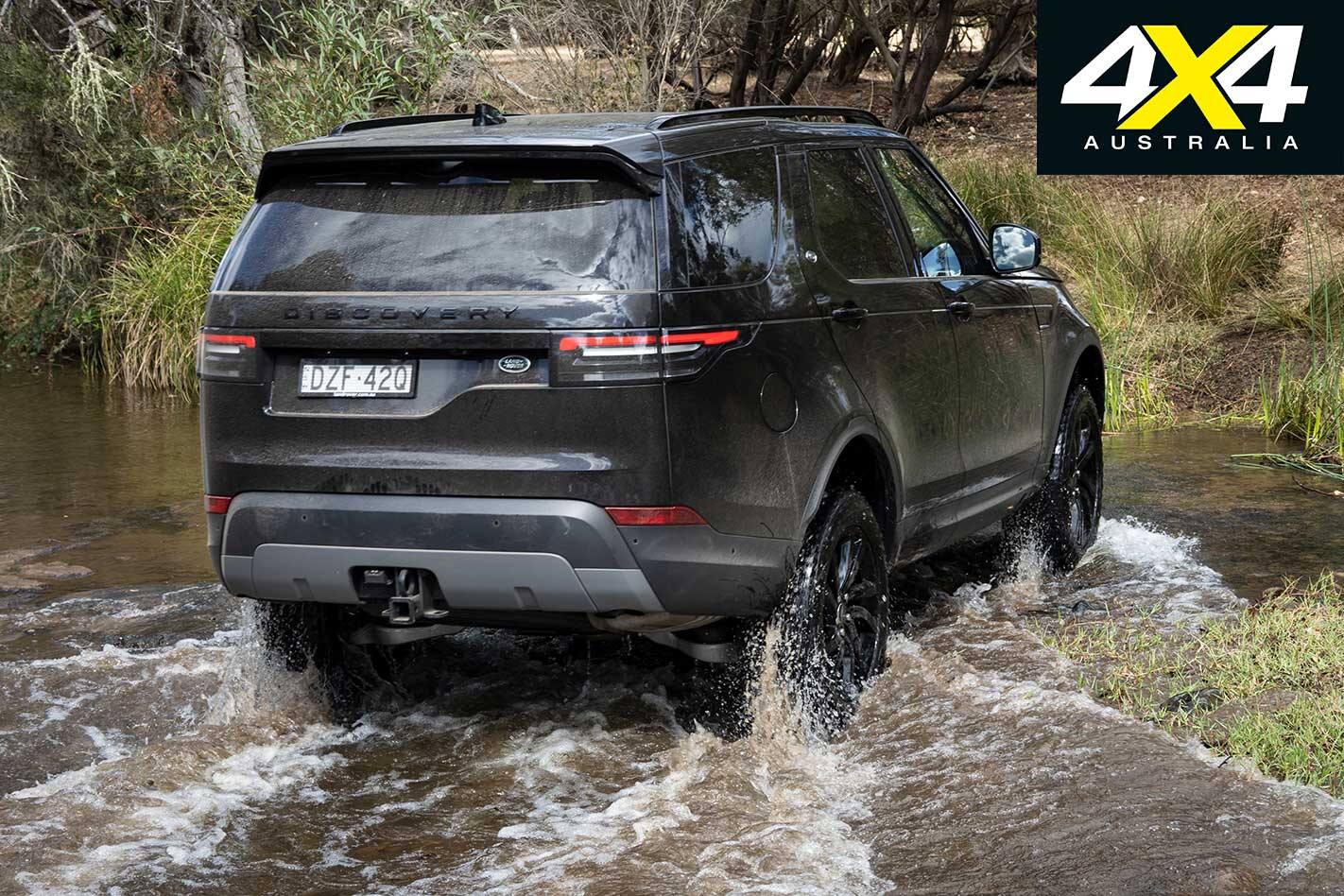
4×4 Shed Log 4: 2019 Land Rover Discovery SD4 Current mileage: 9013km Mileage since last update: 1954km Average fuel consumption: 9.78L/100km
Update 4: Copping new boots
New rubber, new ride for the Disco. By: Tristan Tancredi
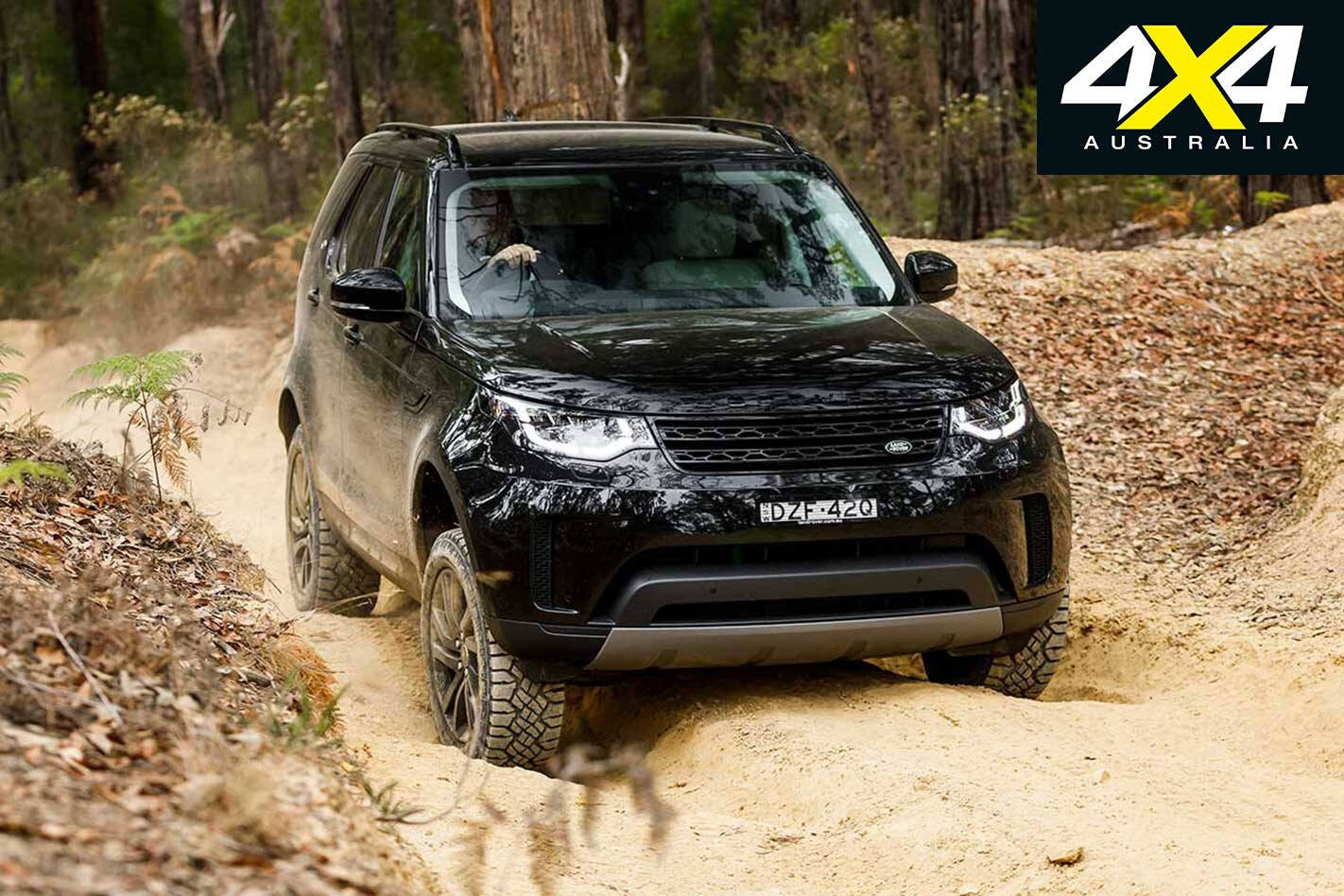
THE past month has been spent acclimating to the new Goodyear Duratracs that were zapped onto the four corners of our 2019 Land Rover Discovery long-termer last month by the folks at Beaurepaires in Chadstone, Victoria.
The off-road focused 255/55 R20 Duratracs not only enhance the Disco’s brooding presence, but they remain quite liveable on city and suburban tarmac. Granted, there’s an audible rumble generated by the tread pattern that invades the cabin, but the ride quality isn’t hindered and the sound becomes unobtrusive once you get used to it.

The comfort of the heated front pews, for short or long stints on the blacktop, has been discussed ad nauseam – and we’re starting to take advantage of this feature in the cooler months – but does the Disco remain comfortable when loaded up with four adults and plenty of cargo? In a word, yep!
With four ‘average-sized’ adults onboard, the Disco remains pleasant for long-distance touring. Leg and head room is aplenty for both front and rear passengers, while the spacious seats are both supportive and comfortable. The Acorn leather trim and natural Shadow Oak veneer trims add to the luxury.
Ample rear cargo space means you’ll be able to load up luggage for four, an Engel fridge and other campsite essentials. Plus, the centre console between the rear seats drops down so that longer objects can squeeze up through the cabin between the two rear-seat passengers.
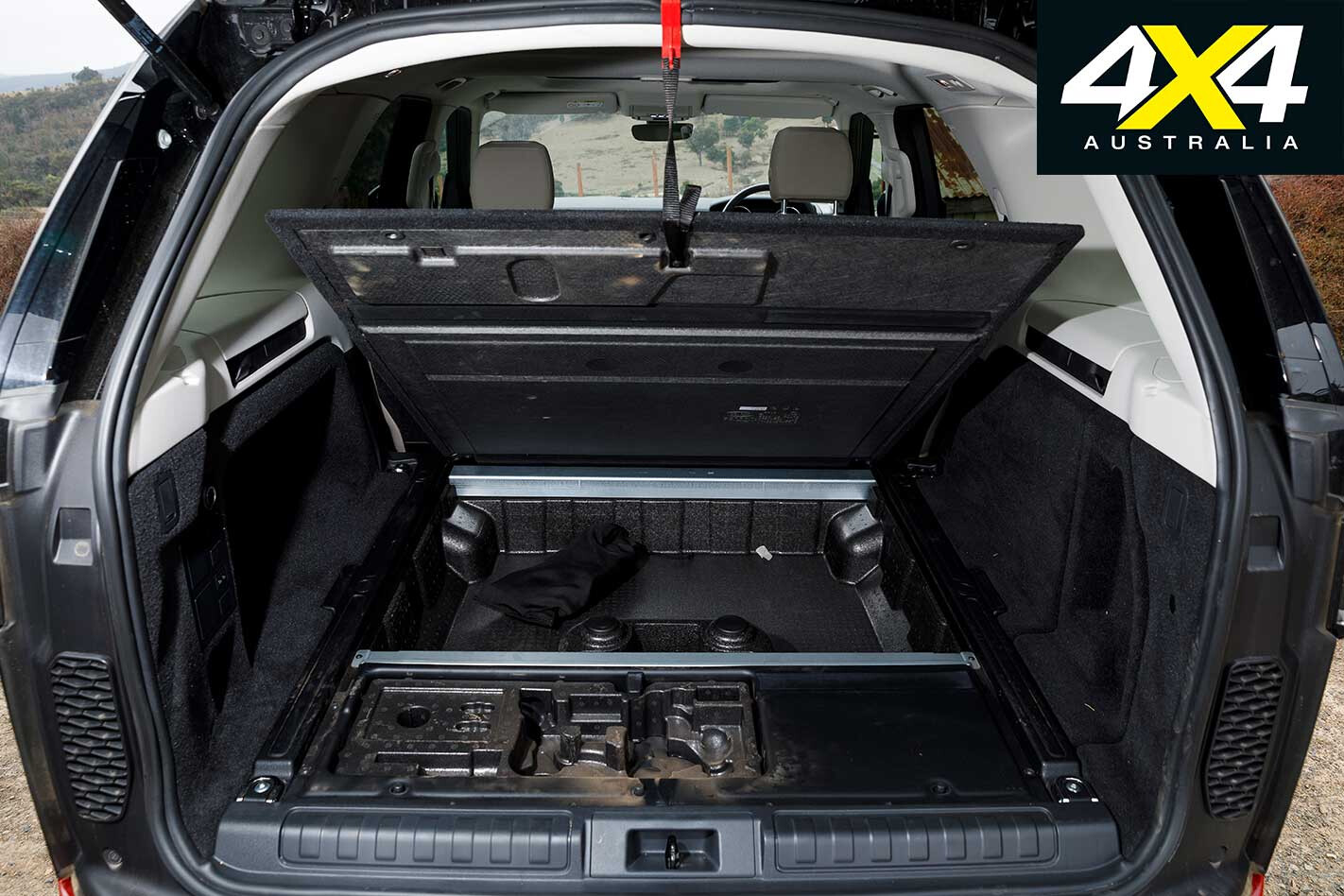
Navigating the touchscreen is a stress-free affair due to the user-friendly interface, and connecting your phone via Bluetooth or plotting a route through the TomTom-based sat-nav both become two-second jobbies after a bit of getting used to – and the screen won’t lock when the car is in motion, so the front passenger can amend the sat-nav inputs on-the-fly. The lack of Apple CarPlay and Android Auto is a notable hole in the Disco’s arsenal, though.
The Disco is fitted with a bunch of InControl driving assistance technology including Autonomous Emergency Braking (AEB) and Lane Keep Assist; the latter guiding the vehicle back on track – and sending a slight vibration through the steering wheel – if it happens to drift out of a lane and touch the lines.
The system might sound obtrusive to old-school 4x4ers, but the technology corrects any wayward steering with a gentle nudge.
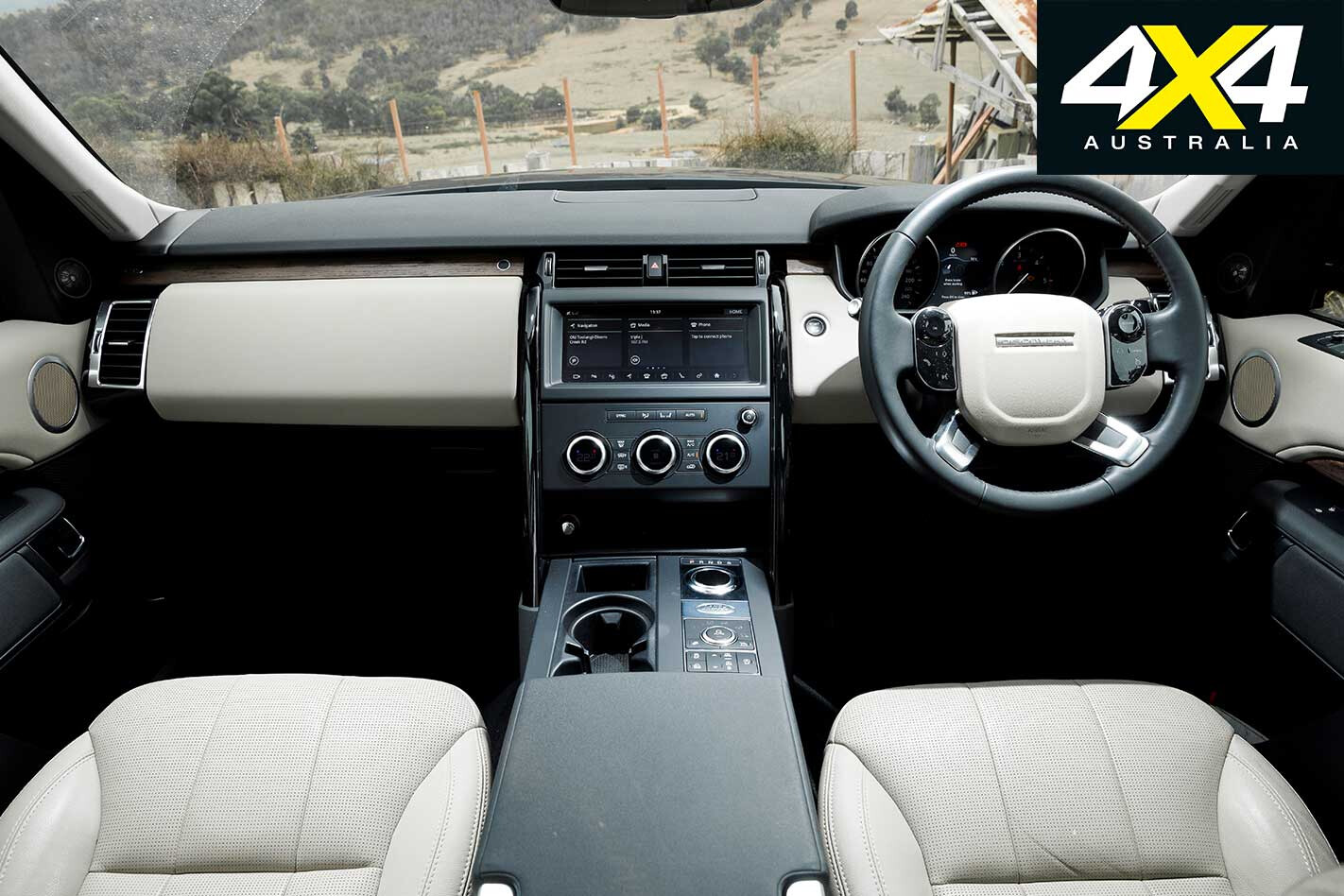
4×4 Shed Log 5: 2019 Land Rover Discovery SD4 Current mileage: 10,096km Mileage since last update: 1083km Average fuel consumption: 10.25L/100km
Update 5: Conclusion
Is it really time to give the Disco back? By: Matt Raudonikis
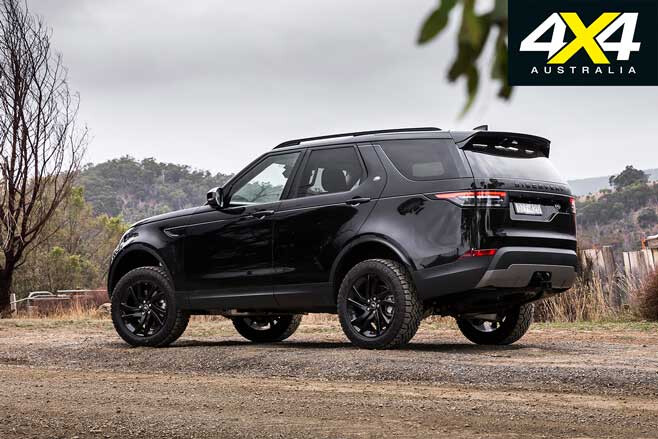
It’s hard to believe the Land Rover Discovery SD4 has been with us for six months already and its time to hand the black beauty back. It’s been such an easy car to live with, it will be tough giving it up. Warm and comfortable for the day-to-day commute grind and just as accommodating for long highway drives or weekend bush escapes.
We wanted to get one last chance to head bush with it and put the Goodyear Duratrac all-terrain tyres to the test, escaping the office for a day in the hills.

It had been dry for a long time around Melbourne and the tracks were dusty and rocky. We did find a clay track that climbed from a flowing creek and didn’t get any sun, so its surface looked slippery. It was also deeply rutted, so we set the suspension height to max and selected the ‘Mud & Ruts’ mode in the Terrain Response 2 system.
The Discovery takes on these sort of tracks without fuss or bother. You can open the off-road settings on the centre screen and see how soon the centre and rear auto-locking diffs are activating, which happens seamlessly. A little bit more suspension lift would be nice, but you need to fit aftermarket ‘bones’ to get that.
While the suspension tops out on rough stuff when in the highest setting, it isn’t fussed by gravel roads and smoother tracks. It drops down to the next lower setting at 80km/h and you need to raise it up again when the ruts deepen and you need the extra ground clearance.
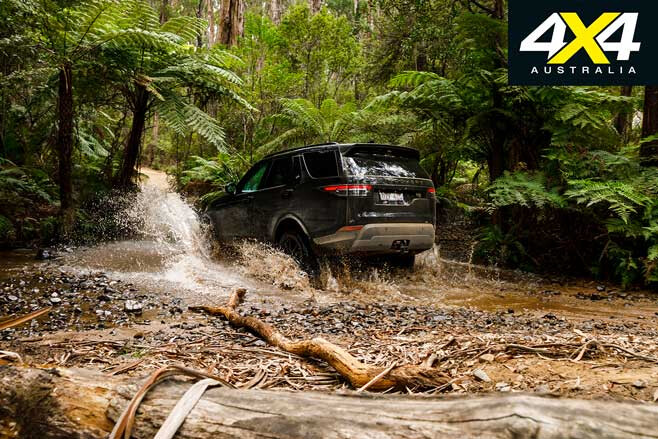
The Disco covers gravel roads with poise and precision that few large 4x4s can match. The independent suspension and lightweight body really help with handling, and by 4×4 standards the Discovery is as sharp as they come. That is equally true on sealed roads, particularly those rough, winding country roads that test a car’s dynamics.
We doubt that whatever car we replace the Discovery with in the 4×4 Shed could ever match the dynamics, luxury and ability of the Land Rover, which is why it will be a tough car to hand back. Maybe we’ll have to wait for the new Defender which will share many of its chassis components with the Discovery.
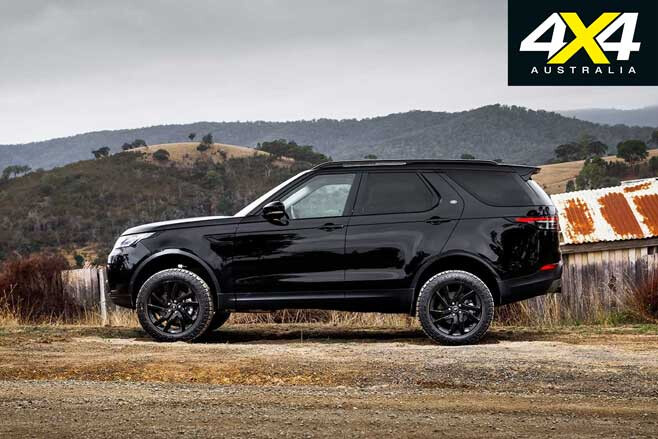
4×4 Shed Log 6: 2019 Land Rover Discovery SD4 Current mileage: 11,364km Date acquired: Dec 2018 Price: $103,840 +ORC Mileage since last update: 1268km Average fuel consumption: 11.16L/100km

